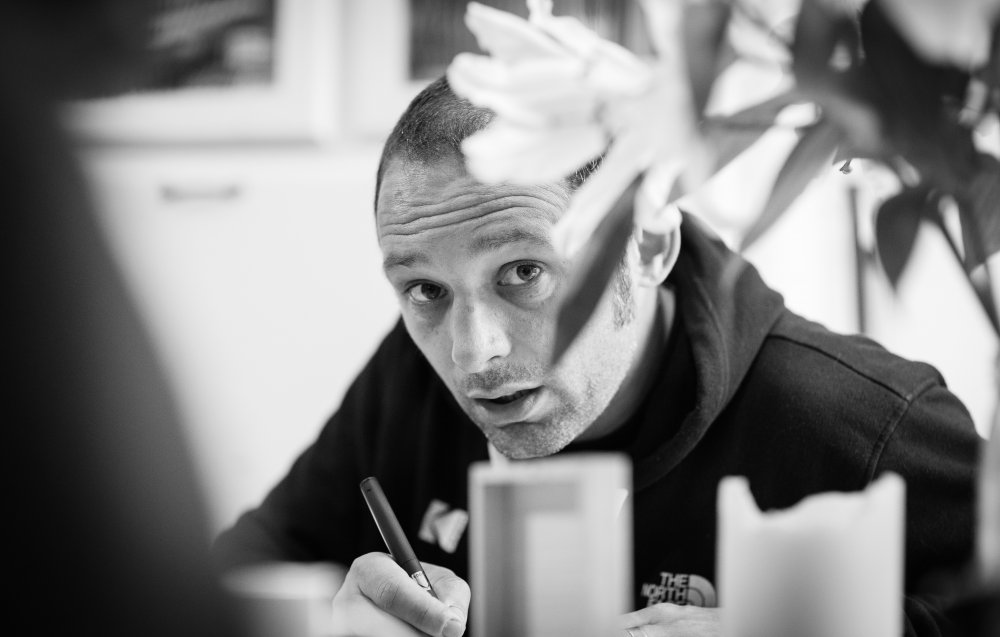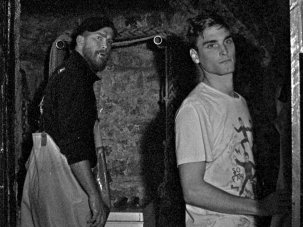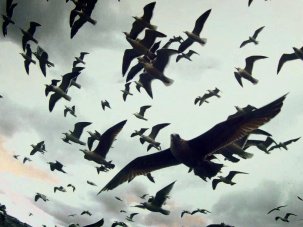At first glance, you might be forgiven for thinking Bait is a newly discovered lost film, the print having languished for decades in the recesses of an abandoned cinema. The black-and-white footage is scratchy and prone to flaring, and the sound has obviously been post-dubbed, but Mark Jenkin has deliberately used archaic filmmaking techniques to explore very modern concerns. Set in his native Cornwall, Bait centres on the tension between the struggling fishing community and the influx of holidaymakers who have changed the face of the area, and while Jenkin’s images may evoke names like Robert Bresson or Roberto Rossellini, his debut feature is a true British original.
Bait is released in UK cinemas on 30 August.
What have the reactions been like as you’ve travelled with this film? Stylistically and culturally it seems like a niche object on the surface, but there’s a fundamentally classical narrative underneath it.
When I started writing the film 20 years ago, I thought it was very local, very specific to Cornwall, and in the 20 years since I’ve put it down and picked it up again, it now seems that everybody can pick their own relevance out of it, and their own significance to their lives. It’s not even their own lives, necessarily, and from the Q&As and stuff people seem to recognise the state of the world in microcosm. It’s that old cliché about something very specific being very universal. Somebody came up to me in the Walter Reade at Lincoln Centre after the American premiere, it was this woman who was American but whose dad had been a fisherman in Barbados, and she said, “This is the story of my dad.”
When you began writing this film 20 years ago, was gentrification a key factor in those early drafts, or was that something you introduced as you observed changes in Cornwall?
The original premise was that it was a found-footage film about this fisherman who’d had an affair with a rich holidaymaker. He’d been attracted to this glamorous woman coming down, and she was attracted to the rugged fisherman. They’d had a fling and she’d gone back up the country and he got on with his life, and then he found out that she was pregnant. He had written himself out of their life but he decided to pick up a camera and start making a video diary of his life, so when this kid is old enough he can learn who his dad is – and as he started filming his way of life he realised it wasn’t what he thought it was. He wasn’t living in a fishing place anymore; he was living in a holiday destination, and the camera also became a catalyst for the simmering resentment underneath the surface, so people wanted to say things to him on camera and the camera became this thing that kind of blew the place up.
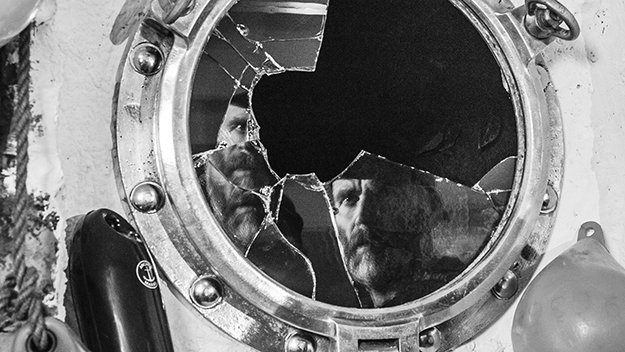
Edward Rowe as Martin Ward
It almost went into production with BBC Films ten years ago and it got quite far into the process before it didn’t happen, and then the producer of the film at that point, who was a very good friend of mine, passed away very suddenly. So that put an end to it, really. When I was looking for projects a few years ago I came back to it in this whole new form I was working with. The found-footage thing didn’t work any more but I realised I could change the story, it could be anything, and the theme would remain the same.
There are elements of documentary-like realism in the way you shoot the process of fishing, but you also give the film a mythic and spiritual quality.
That’s what I find is missing in a lot of stuff that I watch, that spirituality. It’s not a religious thing, but some kind of otherness within it, that’s really important to me. I read Paul Schrader’s book and I didn’t understand what he was getting at to a certain extent, but I kind of like the fact that it’s very difficult to quantify what it is. A sense of otherness is very important, and I think sometimes when people try to tell me how they feel about the film, and the way the form and the subject matter combine, I do think that’s what they’re trying to get at. There’s something intangible and I think that’s what film can do that no other art form does, but it’s really untapped, that kind of otherness.
One of the formal choices I really liked was the use of inserts as flash-forwards or foreshadowing. It suggests that these characters are bound by an inescapable fate.
I like the non-chronological, scattershot approach, just because it’s the way I think, and I really like being able to do that in film. I like the montage effects you can get through editing, especially in combination with close-ups.
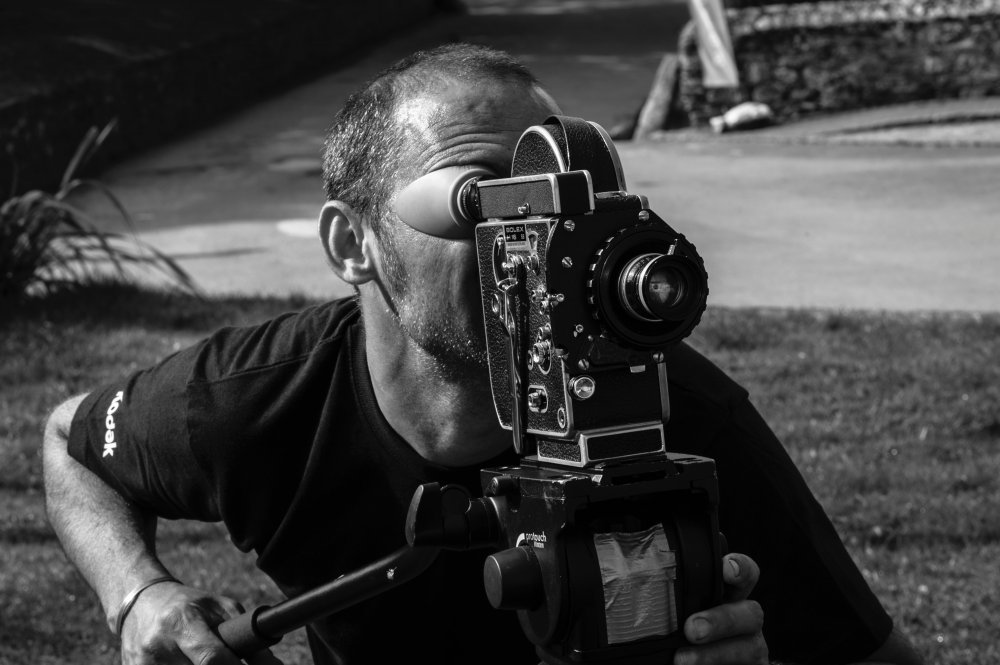
Mark Jenkin
Credit: Thom Axon
Part of it is because it’s on a roll of film that costs us money to buy, and I shot it and hand-processed it and dried it, so I don’t just chuck it away, and before I dismiss any footage I will always look at it and work out where I might be able to put it. When Wenna (Chloe Endean), the young barmaid, gets arrested there’s a shot of her getting handcuffed and it was meant to go chronologically, so she runs away and then it was supposed to cut to these handcuffs being put on. But I realised in the editing that the arrest is less important than the people’s reactions to the incident, so it meant I didn’t need that close-up.
I thought, what would happen if you showed the handcuffs before or later as a flashback? A flashback has a certain meaning or purpose, which is to remind the audience of something that has happened, or you can flash back to something and it has a different meaning because the context has changed, but I think the most powerful way is to flash forward, because it becomes something that’s much more symbolic. Before she throws the ball we see her handcuffed, so she’s already powerless, her fate is probably set. It’s very rare that the action and the reaction are happening in the same shot, so I’ve got so much flexibility to play with that.
When you’ve shot the footage and cut it together, how do you approach the sound?
I do a pure picture cut to start with where I can lip read everybody very easily. I know it all and as I’m watching I know the rhythms of it. So I do quite a tight dialogue cut, with no dialogue, and then I voice every character, which is a pretty weird version of the film. I show that to my partner Mary (Woodvine), who plays Sandra, and she’s a really good critic of my work. She doesn’t go into detail but from her body language I know what’s working and what’s not.
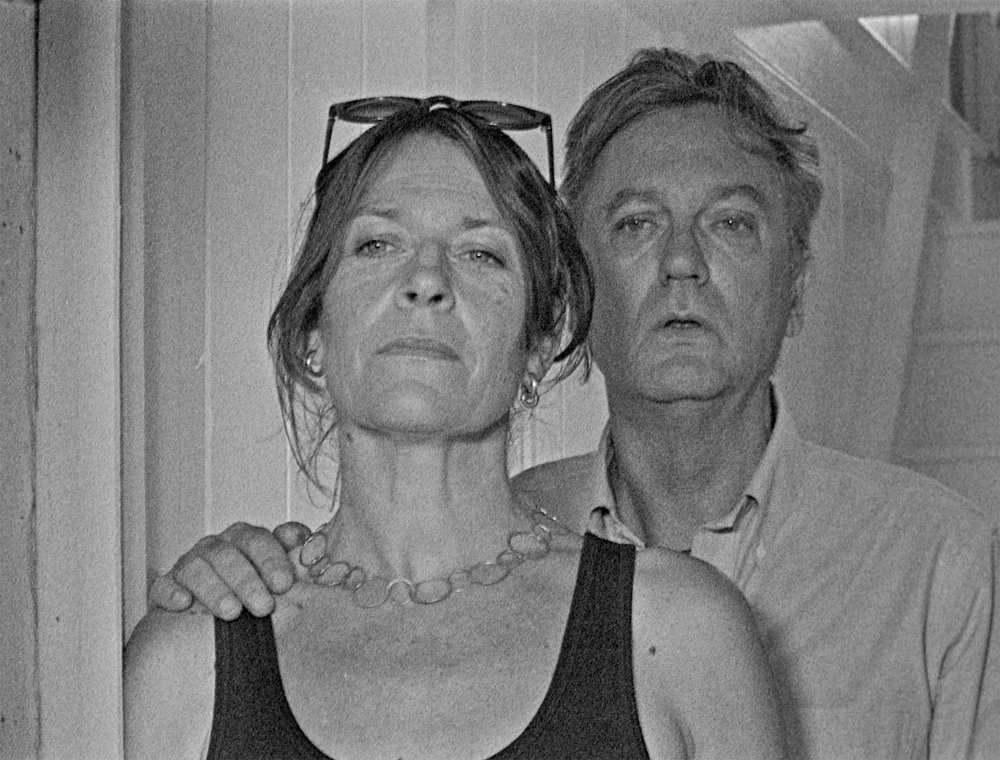
Mary Woodvine and Simon Shepherd as Sandra and Tim Leigh
I do most of the foley myself, in the studio, which is a wet space where I do all the processing, and when the film is sent off to be scanned I repurpose the space to become somewhere I’m working in the dry. I built a voiceover booth out of wreck wood on the beach and stuff, so it’s a real proper salty space, and then I get the actors in one by one. This time I got Edward (Rowe) in first to spend four or five days voicing his stuff, and getting him in set the rhythm for everyone else because he’s the one in almost every scene and being proactive. Then I get the actors in one at a time, gradually building up the layers of voicing.
I like to use very similar spot effects, so most of the doors in the film are maybe two or three door sounds, and obviously doors opening and closing is a big thing. The sound designer basically does the final foley and the mix; I leave all the footsteps and clothes swishing and all that stuff to him; I just can’t face it. But I do pretty much most of it in the studio myself.
How long does that all take?
I was processing the film from the day after we finished shooting for about ten weeks, and I had two weeks to get a rough edit together. About three to four months for cutting and foley. Because there’s no sound, quite often you don’t know if a scene is going to work until you do the foley, so rather than put in some guide audio, which we haven’t got, it’s more a case of doing a lot of the foley as we go along.

Mark Jenkin
Credit: Thom Axon
I wouldn’t say I’m a control freak but I do like to be involved in every bit of it, so there are occasions in the studio when I listen to the foley they’ve spent ages doing and then say, “Actually, can you put my bit back in?” There are some bits in the film where fish get put down and the sound isn’t quite heavy enough. I didn’t use fish in the studio but I weighed stuff, so my fish sound was a gas canister out of a cooker wrapped in a soaking wet towel and slapped down on the floor, and every time I see the film I think the fish aren’t heavy enough. He couldn’t sell them at that price.
Bait contains a mixture of experienced and non-professional actors. What is it that you’re looking for when you’re casting?
Because of the way I shoot with a lot of big close-ups, faces have got to be spot-on, so a lot of it is looking at people’s eyes and thinking: put a light there and you’re really going to jump off the screen. A lot of people have met people who have been in the film and not recognised them because they look so different on screen. Black-and-white is a level of abstraction, of course, but just the way those lenses change the shape of people’s faces and give significance to the eyes and all of that, in a way that our eyes don’t do.
I’m not really interested in realism in the performance necessarily, but I like there to be a lack of theatricality in it, and a lot of the actors are theatre actors. Ed, who plays Martin, is a trained theatre actor, but he’s also a standup comic and his big shows over the past few years have been huge Christmas pantos, so what I like to do is say, “OK, you’re not allowed to do anything,” and then all of those emotions have to come out of his eyes.
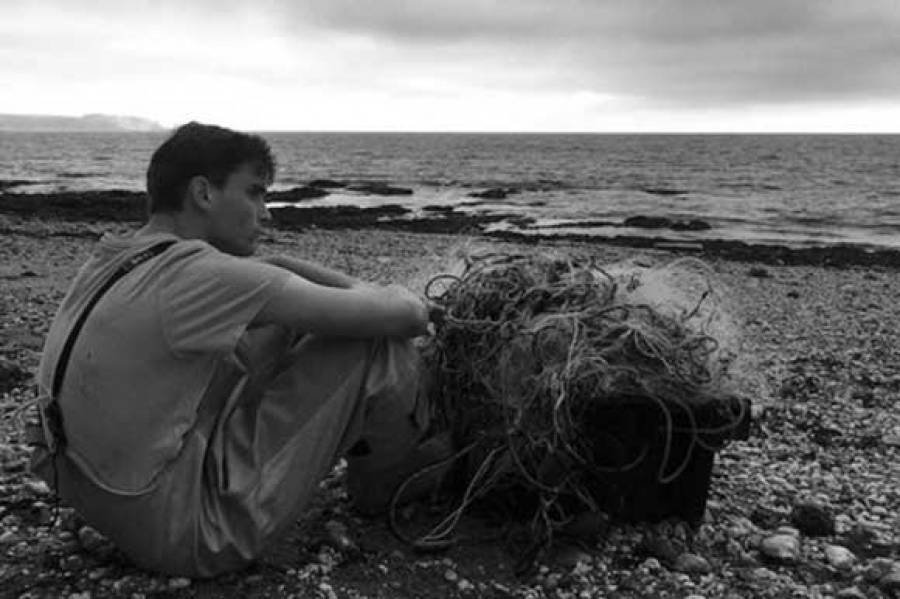
Isaac Woodvine as Neil Ward in Bait
Have you shown the film in Cornwall yet?
Not yet. It’s interesting because when we were in Berlin the Germans subtitled everything, so in one of the kitchen scenes that has a radio report about Brexit in the background, I turned to Mary and said, “Fucking hell, they’ve subtitled the radio report.” Suddenly there’s all this stuff about Brexit, and then the Q&A becomes about Brexit and I’m sort of the unofficial spokesperson for Brexit in Berlin.
Where I come from that’s quite tricky, because I live in a fishing place where everybody voted for Brexit. I thought, shit, we’re not going to be able to go home if people think this is an anti-Brexit film, but luckily the discussion was about the film being a kind of grey area. It’s very hard to say if it’s a pro-Remain or pro-Leave film, or if it’s backwards-looking or progressive, there’s no overt traditional politics within it.
My main thing is, if the fisherman of Newlyn like it that’s all that matters to me, because I know I’ve got the detail and the theme and the ethos correct. Obviously there are other important audiences too, because there aren’t enough fishermen left to put the film into profit.
-
The Digital Edition and Archive quick link
Log in here to your digital edition and archive subscription, take a look at the packages on offer and buy a subscription.




